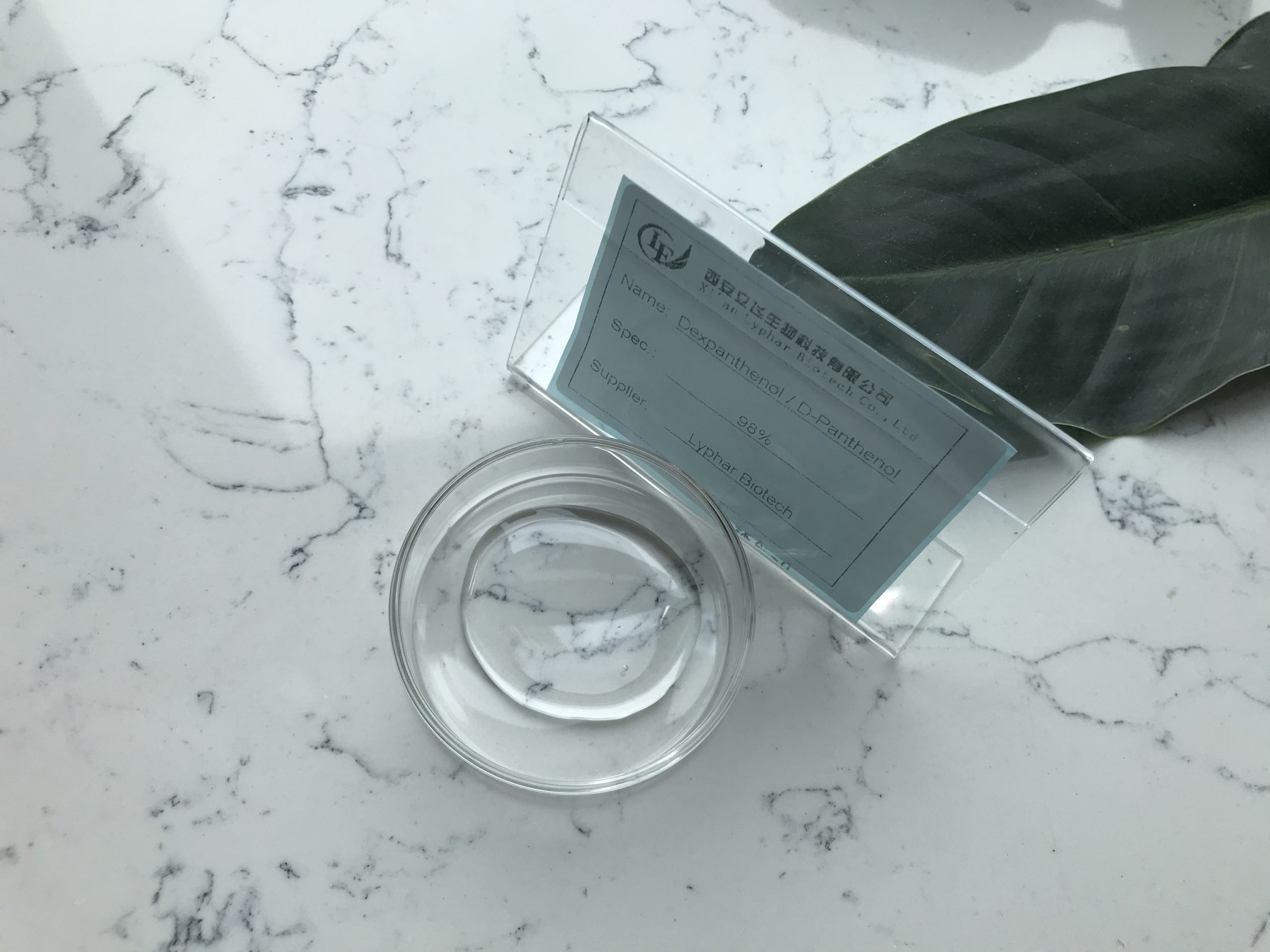D-Panthenol, also known as dexpanthenol or provitamin B5, is a derivative of pantothenic acid (vitamin B5). It’s commonly used in skincare and haircare products due to its moisturizing and conditioning properties. Here’s the chemical structure and some of its physical properties:
Chemical Structure of D-Panthenol:
D-Panthenol has the following chemical structure:
HO
|
HO — C — OH
|
CH3
In this structure:
- HO represents a hydroxyl group (-OH).
- C represents a carbon atom.
- CH3 represents a methyl group (-CH3).

Physical Properties of D-Panthenol:
- Molecular Formula: C9H19NO4
- Molecular Weight: 205.25 g/mol
- Melting Point: ~64-68°C
- Solubility: D-Panthenol is highly soluble in water and can form clear solutions. It’s also soluble in alcohol and glycols.
Functions and Uses:
D-Panthenol is widely used in cosmetic and personal care products for its various benefits:
- Moisturization: D-Panthenol has humectant properties, which means it helps attract and retain moisture. This makes it effective for hydrating the skin and hair.
- Wound Healing: D-Panthenol can help in promoting skin regeneration and wound healing due to its ability to support cell proliferation.
- Hair Care: It’s often included in shampoos, conditioners, and hair treatments because it can improve the appearance and manageability of hair. It can also help reduce hair breakage and increase hair elasticity.
- Skin Care: D-Panthenol is used in creams, lotions, and other skincare products to improve skin texture, moisturize dry skin, and soothe irritation.
- Sunburn Relief: It can help alleviate the discomfort of sunburn by soothing and moisturizing the affected skin.
Keep in mind that these properties and uses are based on information available up until September 2021. For the most current and accurate information, I recommend checking reputable sources or product labels.

Adverse Effects of D-Panthenol
D-Panthenol, also known as provitamin B5 or dexpanthenol, is a derivative of pantothenic acid (Vitamin B5). It is commonly used in various skincare, haircare, and cosmetic products due to its moisturizing, anti-inflammatory, and wound-healing properties. However, like any substance, D-Panthenol can have adverse effects for some individuals, although they are generally rare and mild. Some potential adverse effects of D-Panthenol include:
Skin Irritation: Although D-Panthenol is generally well-tolerated, some individuals might experience skin irritation, redness, itching, or a burning sensation, especially if they have sensitive or allergic skin.
Allergic Reactions: Allergic reactions to D-Panthenol are rare, but they can occur. Signs of an allergic reaction may include skin rash, hives, swelling, or difficulty breathing. If you experience any of these symptoms, you should discontinue use and seek medical attention.
Contact Dermatitis: In some cases, D-Panthenol can cause contact dermatitis, which is a skin condition characterized by redness, itching, and inflammation at the site of application.
Eye Irritation: If D-Panthenol comes into contact with the eyes, it might cause mild irritation or stinging. It’s important to avoid getting the product in the eyes and to rinse thoroughly with water if it does happen.

Digestive Upset: While D-Panthenol is often used topically, it can also be found in oral supplements. Ingesting high doses of D-Panthenol can potentially lead to digestive upset, including nausea, diarrhea, and stomach cramps.
Photosensitivity: There is some limited evidence that excessive use of D-Panthenol on sun-exposed skin might increase sensitivity to sunlight, potentially leading to sunburn. However, this effect is not well-established and is more likely to occur with other ingredients that sensitize the skin to UV radiation.
It’s important to note that adverse effects are usually mild and infrequent with the use of D-Panthenol in skincare and cosmetic products, especially when used as directed. If you have concerns about using products containing D-Panthenol or if you experience any adverse reactions, it’s advisable to consult with a dermatologist or healthcare professional. If you’re considering taking D-Panthenol as an oral supplement, it’s also a good idea to consult your healthcare provider before doing so, especially if you have any underlying health conditions or are taking other medications.
